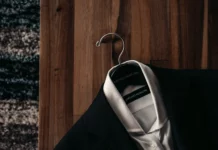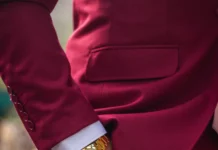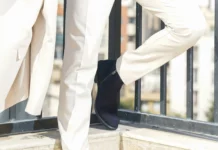These are some rules and tips you can start putting in practice to make it easier and safer when color matching clothes. It can be confusing and a bit scary too, especially when you are afraid to end up looking like a traffic light.
If you often find yourself wondering if that’s a good color combination or if you want to step out of the monochrome wardrobe but don’t really know how, then you need to continue reading. Rest assured you are not the only one!
Any fashion expert will agree that any good style is built on fit, fabric and color. Once you learn what type of clothing is best for your body shape and what kind of fabrics are better for each season, it’s time to go over color combinations.
Basic color schemes

Before we dive into it, first you need to understand the basics of colors and the relationship to one another. The classical color wheel can be quite helpful to building colorful matching outfits and finding the perfect palette. There are three things you need to know about the fundamentals of color:
- Associated colors are right next to one another and they can help you build monochrome (or nearly monochrome) looks.
- Complementary colors are opposite to one another and they can help you add that contrasting element to your attire.
- Triad colors are three colors far from each other and they are great to achieve a balanced, less contrasting look.
How to color match clothing?
Incorporating more color to your outfits can be tricky, especially if you are used to monochrome looks. But the ultimate rule is to do so step by step. You want to start with a neutral base 一grey, black, brown, navy blue and olive tones will do the trick一 and add one opposite colorful element at a time. That single garment will provide all the necessary contrast to your look.
Let’s make an example. If you opt for a full-denim look, then your distinctive element could be a dark orange jacket or a bold patterned sweater. The jacket (or sweater) will pop out from the rest of the neutral-based clothes, resulting in a modern, sophisticated style. As that famous fashion rule states: less is always more.
Now, what about if you want to combine more than one colorful piece into your look? You absolutely can, but there are a few things to take into account. In order to avoid looking like a Christmas tree, you want to pick one color and then play with its different shades. In other words, you shouldn’t match your socks, shirt, jacket and pants in the exact same tone. Instead choose one color family and match the garments with different color intensities.
There will be less contrast compared to the first option, but the elegant and trendy feeling remains still. Additional tip: we advise you to opt for maximum two colorful garments for each look and then maintain a neutral base when it comes to other elements.
For example, you can choose a darker shade of blue for the bottom and a lighter shade for the shirt. Or, otherwise, you can opt for a dark maroon pair of pants and a light mustard sweater to complement the look. The trick is not to go so far away between shades.
Matching patterns
We’ve been talking about matching solid colors, but very little about patterns. The thing is that it’s pretty much the same energy: finding the right balance. A patterned garment will always be the pop-up element in your look, it doesn’t matter if it’s a bottom or upper piece of clothing. It will always be the center of attention, above any other bright colorful piece you may be wearing.
 Therefore, all you have to do when it comes to the rest of your look is finding complementary items. There’s no need for them to be exactly neutral, as long as you opt for the same color family as the pattern. Let’s say you are wearing a patterned red and green sweater. You can always opt for a classic pair of jeans, yet you can also choose a dark olive pair of pants. The sweater will contrast in both scenarios, but the second alternative will have a bolder, more stylish effect.
Therefore, all you have to do when it comes to the rest of your look is finding complementary items. There’s no need for them to be exactly neutral, as long as you opt for the same color family as the pattern. Let’s say you are wearing a patterned red and green sweater. You can always opt for a classic pair of jeans, yet you can also choose a dark olive pair of pants. The sweater will contrast in both scenarios, but the second alternative will have a bolder, more stylish effect.
On the opposite hand, if you are going for a pair of patterned pants, then a color-blocked t-shirt will balance the outfit.
Mixing patterns is a very sensitive situation. It’s certainly a possibility, although it’s usually attached to trending prints and styles. Here’s few pieces of advice if that’s what you are looking for:
- Don’t match garments that have the same pattern, and don’t match patterns that have the same scale. That is: you can opt for a vertical striped shirt, but the tie shouldn’t have the same design nor the same pattern-scale.
- A good start is matching small things on your look. Stay away from combining a printed pair of pants and a shirt, and start by combining the shirt with your tie or socks, for example.
Accessories
One common mistake when it comes to color matching is thinking that it only applies to clothes. That’s certainly not the case: accessories should never be forgotten. As we said earlier, it’s all about combining similar shades of the same color: that is choosing the same color family for all your accessories, from your belt, shoes and tie, including your briefcase, in case you carry one.
In simpler words, you can’t match a brown belt with black shoes. You probably already have a neutral-based foundation when it comes to your accessories, but as a reminder you shouldn’t choose them as the pop-up element in your look: accessories are only there to complement your outfit. They are the cherry on the top of the cake, not the jam between layers.
By the way, when it comes to socks, the correct choice is always to match them with your pants.
We hope this introduction to color matching clothes was both helpful and inspiring. We recommend you check out the essential suit colors for the perfect man’s wardrobe.
















